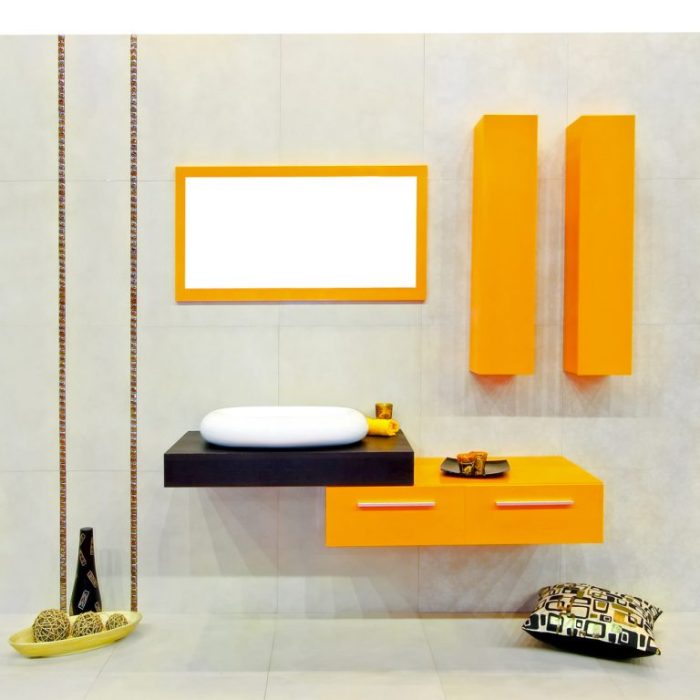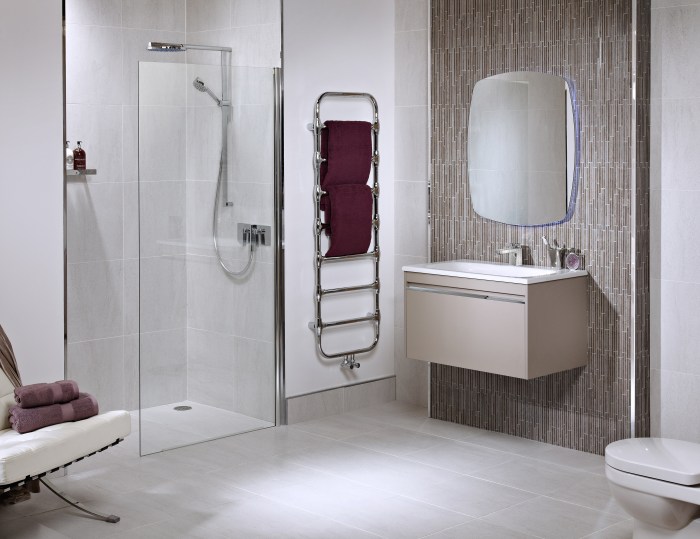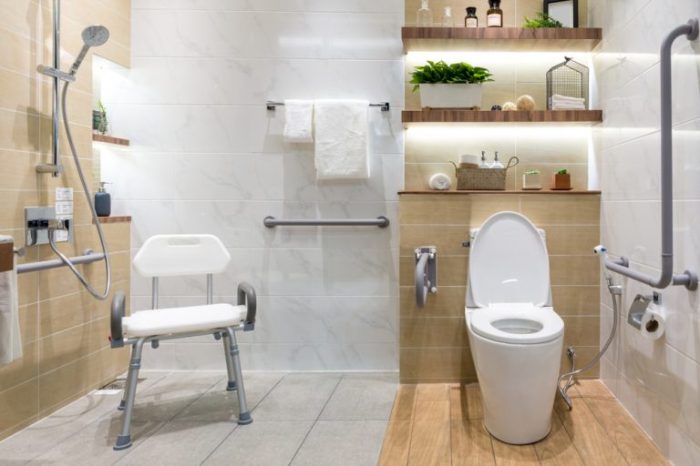When it comes to bathroom furniture, water resistance is key. In wet environments, moisture can wreak havoc on your furniture, causing it to rot, warp, or even grow mold. That’s why it’s important to invest in water-resistant bathroom furniture that can withstand the rigors of a humid environment.
Water-resistant bathroom furniture is made from materials that are designed to repel water and moisture. This makes it an ideal choice for bathrooms, where water is constantly present. Water-resistant furniture can help to protect your bathroom from damage and keep it looking its best for years to come.
Materials and Properties
In humid environments like bathrooms, water resistance is a crucial factor for furniture longevity and functionality. Water-resistant materials protect furniture from moisture damage, ensuring durability and aesthetic appeal.
Common Water-Resistant Materials
Commonly used water-resistant materials in bathroom furniture design include:
- Solid Surface: A non-porous, durable material that resists moisture, stains, and bacteria.
- Laminate: A multi-layered material with a moisture-resistant surface that protects the core from water damage.
- Acrylic: A glossy, water-repellent material that is resistant to scratches and moisture.
- Teak: A naturally water-resistant wood that is ideal for humid environments.
- Stainless Steel: A corrosion-resistant metal that is impervious to water and moisture.
Durability and Longevity
Water-resistant materials enhance the durability and longevity of bathroom furniture. They prevent moisture absorption, reducing the risk of warping, swelling, or rotting. The non-porous nature of these materials also inhibits mold and mildew growth, ensuring a hygienic and healthy environment.
Design Considerations
Designing water-resistant bathroom furniture involves careful consideration of drainage, ventilation, and the use of appropriate materials and finishes to prevent water damage.
Proper drainage is crucial to prevent water accumulation and promote drying. Furniture should be designed with adequate drainage holes or slots to allow water to escape. Ventilation is equally important to facilitate air circulation and prevent moisture buildup. Incorporating vents or open spaces in the furniture design allows air to circulate, reducing the risk of mold and mildew growth.
Water-Repellent Finishes and Coatings
Applying water-repellent finishes or coatings to the furniture surfaces provides an additional layer of protection against water penetration. These coatings create a barrier that repels water, preventing it from seeping into the furniture and causing damage. They are particularly effective in areas exposed to direct water contact, such as vanity tops or shower enclosures.
Seamless Joints and Minimal Gaps
Designing furniture with seamless joints and minimal gaps is essential to prevent water from penetrating through cracks or crevices. Joints should be properly sealed using waterproof adhesives or sealants. Gaps between components should be minimized to reduce the likelihood of water seepage.
By eliminating potential entry points for water, the furniture’s water resistance is significantly enhanced.
Functional Features
Incorporating functional features into water-resistant bathroom furniture is essential for optimizing its usability in wet environments. This includes providing innovative storage solutions, incorporating water-resistant components, and designing surfaces that are easy to clean.
Innovative storage solutions can include pull-out shelves, drawers, and compartments that are designed to accommodate wet items. These solutions help to keep wet items organized and out of the way, while also providing easy access when needed.
Water-Resistant Shelves, Drawers, and Compartments
Water-resistant shelves, drawers, and compartments are essential for protecting stored items from moisture and humidity. These components should be made from durable materials that can withstand prolonged exposure to water, such as stainless steel, plastic, or waterproof wood.
Easy-to-Clean Surfaces
Maintaining hygiene in wet environments requires surfaces that are easy to clean. Smooth, non-porous surfaces are ideal, as they prevent the accumulation of dirt and bacteria. These surfaces can be made from materials such as ceramic, glass, or sealed wood.
Aesthetic Considerations
When selecting water-resistant bathroom furniture, aesthetics play a crucial role in complementing the overall design and creating a cohesive space. From traditional to modern styles, various options are available to suit different preferences and bathroom aesthetics.
The following table provides a comparison of different styles of water-resistant bathroom furniture:
| Style | Characteristics |
|---|---|
| Traditional | Ornate details, rich finishes, classic shapes, and often incorporates natural materials like wood |
| Modern | Clean lines, minimalist design, geometric shapes, and often uses materials like metal and glass |
| Coastal | Inspired by the seaside, featuring light and airy colors, natural textures, and often incorporates elements like rope and wicker |
| Industrial | Exposed hardware, raw materials like metal and concrete, and a utilitarian aesthetic |
| Scandinavian | Simplicity, functionality, natural materials like wood and light colors, and often incorporates organic shapes |
To incorporate water-resistant furniture into various bathroom designs, consider the following examples:
- Traditional: Pair an ornate vanity with a classic mirror and traditional lighting fixtures to create a timeless and elegant bathroom.
- Modern: Opt for a sleek vanity with geometric shapes and metallic accents, paired with a contemporary mirror and minimalist lighting to achieve a sophisticated and modern look.
- Coastal: Choose a vanity with a distressed finish and rope handles, complement it with a woven mirror and natural fiber accents to create a beachy and relaxed atmosphere.
- Industrial: Select a vanity with exposed metal hardware and a concrete countertop, paired with industrial-style lighting and accessories to create a raw and edgy bathroom.
- Scandinavian: Choose a vanity made from natural wood with clean lines and organic shapes, paired with a simple mirror and warm lighting to create a cozy and inviting bathroom.
The latest trends in water-resistant bathroom furniture aesthetics include:
- Sustainability: Focus on using eco-friendly materials and sustainable manufacturing practices.
- Smart technology: Integration of technology, such as touchless faucets and LED mirrors.
- Customizable options: Ability to tailor furniture to specific needs and preferences, such as adjustable shelves and customizable finishes.
- Mixed materials: Combinations of different materials, such as wood and metal, to create unique and stylish designs.
Installation and Maintenance
Installing and maintaining water-resistant bathroom furniture is crucial to ensure its longevity and prevent water damage.
Installation
- Read the manufacturer’s instructions carefully before installation.
- Use a level to ensure the furniture is installed evenly.
- Secure the furniture to the wall or floor using the appropriate hardware.
- Apply a silicone-based sealant around the edges of the furniture where it meets the wall or floor to prevent water seepage.
Maintenance
- Clean the furniture regularly with a mild detergent and water.
- Avoid using abrasive cleaners or harsh chemicals.
- Dry the furniture thoroughly after cleaning to prevent water damage.
- Inspect the furniture periodically for any signs of damage or water leakage, and repair promptly if necessary.
Last Word
If you’re looking for bathroom furniture that is both stylish and functional, water-resistant furniture is the perfect solution. It will help to keep your bathroom looking its best and protect it from damage for years to come.



